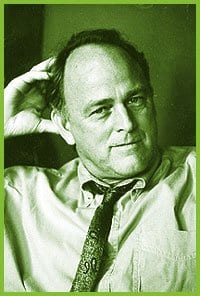In the closing days of the federal election, there was much discussion of “a vision for Canada” and whether our country would be inclusive or exclusive. Desperate to woo voters, the Liberals shifted from centre right to centre left while the Conservatives inched from further right toward the centre.
In response, the electorate, seemingly uncertain of what the rightist agenda of the Conservatives, in particular leader Stephen Harper, would entail, voted for the status quo. Many political pundits, poring over the outcome, indicated it reflected a belief in Canada as a socially progressive country.
Following the election, there was much analysis of how the minority Liberal government would deal with critical social issues and how long it could possibly stay in power. In the last issue of Capital Xtra, there were columns stressing the importance of continuing to pressure the ruling Liberals so as to maintain the rights our community has achieved and to ensure that a federal ruling in favour of same-sex marriage be finalized. Without a doubt, working with any government is paramount.
But an equally important task for our community is to monitor and play close attention to developments within the Conservative Party. Throughout and after the election, like many people, I kept asking myself – what does this party really stand for? Was the moderation it underwent during the campaign merely a political ploy to try and get elected?
A good deal of outrage was expressed in letters to the editor in response to the homophobic comments Renfrew Conservative candidate Cheryl Gallant made in public speeches. While I, too, find her words disturbing and unacceptable, at least she was being upfront and forthright. You know clearly where she stands on gay and social issues.
But when Harper silenced her and other candidates were made to toe the soft-sell line, wasn’t he being undemocratic? A fundamental tenet of democracy is freedom of speech. Was this right being overridden by a pretense of political correctness? Was it driven by fear that such comments would expose the party’s true colours and thus undermine any chance it may have had of forming the next government? Is the Conservative leader desperate to appear to head a party more reflective of Canadian public opinion? Is he pretending that there has been a change in party policy?
Belinda Stronach, who ran for the leadership of the party and later was elected as an MP, has been supportive of gay rights. But prior to the election call, there were defections to the Liberal party by long-time Conservatives, such as openly gay Scott Brison. Had he stayed within the Conservative ranks, he and Stronach could have argued on behalf of a more progressive agenda. Can Stronach, on her own, influence future social policy directions for the party? Does Brison’s quick flight from the Conservatives under Harper signal there was greater opportunity and reward for him on the Liberal side of the House? Or, did he know that there was no hope for true “reform” within a party led by Harper?
Who then is the real Stephen Harper and what are his real thoughts for the future of the Conservatives? Throughout the election campaign, his performance was consciously moderated, carefully planned out at almost every turn. It was pitched to portray him as middle-of-the-road, less extreme than candidates such as Cheryl Gallant.
Gallant’s opinions and outspoken nature are clearly reflective of her Christian beliefs and her commitment to maintaining traditional gender and family roles. Harper, throughout his earlier political career, has expressed similar beliefs. However, as he again has shown in the nominations he made to the shadow Cabinet, he is a highly strategic thinker. He is discreetly deliberate in shaping the public face he wants to put on the Conservative Party.
Canadians, in particular queer ones, need to remain suspicious of this, of the muzzling of the Conservative Party members and the apparent muting of the party’s platform. This shift over the past months under his leadership is a worst case scenario of “Speak no evil, Hear no evil, See no evil.” It is a political game of wait-and-see, of a leader and a party that could, upon being elected as the government, draw Canada closer to a type of government where decisions are made based on religious beliefs rather than for the protection, benefit and inclusion of all its citizens. We must not be complacent or naïve in the belief that our country’s proclaimed laws cannot, in the future, be undone.

 Why you can trust Xtra
Why you can trust Xtra


